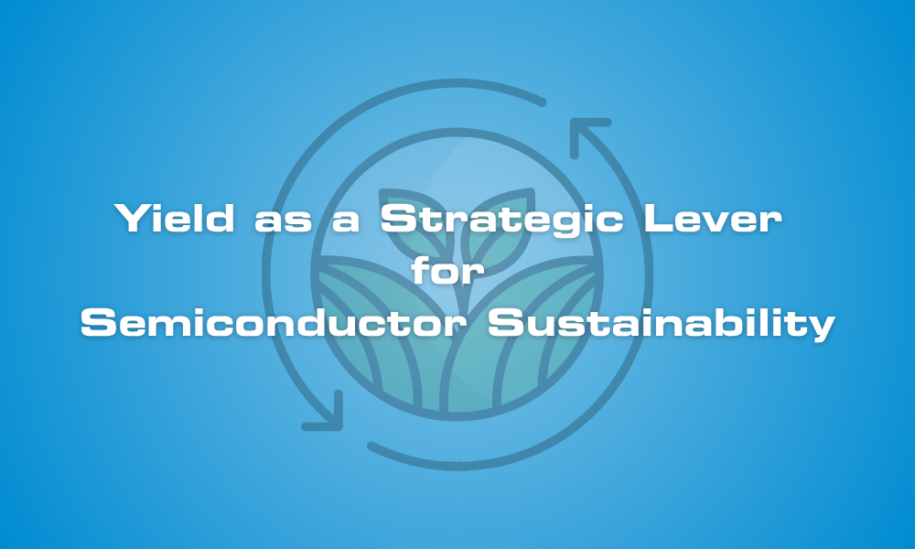When people talk about sustainability in semiconductors, they usually focus on reducing energy use, improving materials, or designing more efficient packaging. However, there’s another lever hiding in plain sight – yield itself.
Every wafer that doesn’t make it to the finish line carries a cost far beyond the balance sheet. Energy, ultrapure water, chemicals, tool time, and engineering resources have been poured into each wafer. When yields fall short, those resources aren’t just wasted – they multiply inefficiency across the fab. Scrap waste forces additional wafers into production, while rework extends cycle time and consumes even more energy and materials.
In today’s capacity-constrained fabs, these inefficiencies don’t just impact margins, they are relevant for meeting sustainability goals.
Why Yield Drives Sustainability
Higher yields mean fewer wasted wafers. Fewer wasted wafers mean less energy, fewer chemicals, and less engineering time spent on troubleshooting. To put it simply: every wafer saved is a win for both productivity and the planet.
This reframes yield management from being purely about financial performance to also being about environmental performance, a message that resonates with customers, investors, and regulators alike.
The Role of Data and Early Insight
The problem is that yield issues are often discovered too late. By then, the losses are already locked in. Smarter data use is the game-changer. Detecting tool drift before it produces dozens of bad wafers, spotting systematic defects across lots, or correlating defect data with yield outcomes also saves materials and energy.
That’s why specialized platforms have emerged that can integrate and analyze this data at scale. At DR YIELD, we’ve seen firsthand how powerful early insight can be. With solutions like YieldWatchDog, manufacturers gain real-time visibility into their processes, allowing them to detect critical signals long before they grow into yield-limiting problems. By bringing inspection, test, and equipment data together in one environment and applying intelligent algorithms, engineering teams no longer need to chase anomalies after the damage is done – they prevent them.
Smarter Yield, Smarter Sustainability
Sustainability in semiconductors can’t be achieved by focusing on just one factor. Yield amplifies the impact of every initiative. Better yields directly reduce the carbon footprint of every chip produced.
As fabs seek to balance performance with responsibility, yield engineering deserves a seat at the sustainability table. Sometimes the greenest choice is also the smartest one: preventing waste before it happens.


